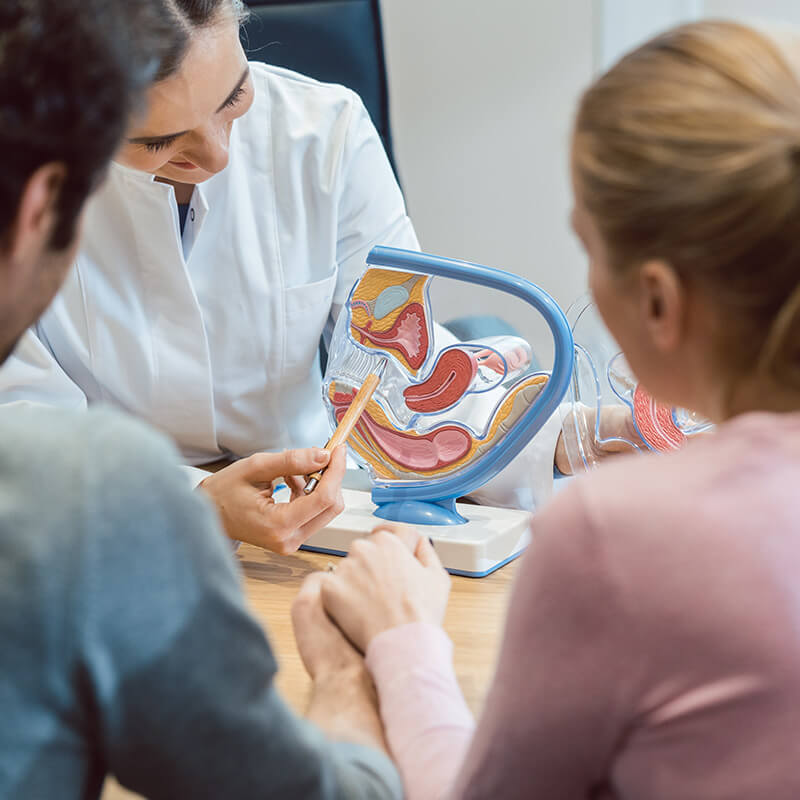
You know when you have a menstrual cycle but you may not know exactly how it happens and what part of your body is responsible. Your uterus plays a vital role in your fertility and monthly cycle. Since uterine malformations are found in about 3%-5% of the population, looking more closely at the uterus anatomy, purpose and possible variations and their consequences can be important if you are experiencing infertility symptoms or pregnancy complications.
Uterus Anatomy
The uterus is a hollow organ found in the woman’s lower abdomen, shaped like a pear and performs a role in menstruation, pregnancy and delivery of a fetus. Your uterus varies in size and shape based on your age and reproductive sex hormones. During your menstrual cycle, the uterus sheds its lining and allows for a fertilized egg (ovum) to implant and make room for the developing fetus’s growth. Typically most women have only one uterus however being born with a double uterus does occur. At times, a uterus may not develop completely prior to birth and this condition is known as Mullerian Anamoly and can also lead to variations of abnormal uterus including a double uterus or uterine septum.
A normal uterus is located behind the bladder and in front of the rectum and is divided into 3 main sections:
- Fundus
- Corpus (body)
- Cervix (which protrudes into the vagina)
Commonly, a uterus is positioned anteverted (tipped forward) where it is not flexed, tilted backwards, rotated or inverted. At times these various positions may cause pelvic pain, minor incontinence, fertility issues, and painful sex.
Your uterus is comprised of tissues found in 3 layers:
- Endometrium-uterine inner lining comprised of both functional and basal endometrium. The functional layer responds to reproductive hormones and menstrual bleeding. If the basil endometrium is damaged, this can result in adhesions and fibrosis (Asherman syndrome).
- Myometrium– smooth muscle layer
- Serosa/Perimetrium-outer layer of epithelial cells
The Uterus Purpose and Function for Pregnancy
When referring to the uterus and fallopian tubes, their importance in pregnancy is like “hand and glove”. Your uterus has a purpose associated with pregnancy and fertilization. The fallopian tubes need to be open and the uterus normal and healthy for you to have fertilization and a successful pregnancy.
In the fertilization and implantation process, the uterus accepts the fertilized egg (ovum) after it passes through the fallopian tube. Once this occurs, the ovum implants into the endometrium of the uterus and receives a blood supply of nutrients from the uterine vessels that are specifically designed to accomplish embryo growth.
As the embryo grows, the uterus expands to accommodate the pregnancy. When it is time for delivery, the uterus contracts while the cervix dilates which ends in a delivery of a baby.

Uterus Problems May Cause Reasons for Surgery or Treatment
At times, certain conditions may need surgical intervention or medical treatment. Some of these include:
In order to determine if you may have an existing abnormality, and causing you trouble either getting pregnant or sustaining a pregnancy to term, an exact diagnosis is needed. At Inovi, your first steps visit and fertility evaluation may include assessment of the uterus. These could include such testing as:
If you have a malformed uterus, your pregnancy could be a normal one with no problems. However, if you have experienced recurrent miscarriages, have a bicornate uterus or other infertility issues early diagnosis and action could improve your outcomes.
Other conditions that might increase the risk for early or breech delivery:
- Uterine didelphys
- Bicornate uterus
- Unicornate uterus
- Septate uterus
- Women exposed to Diethylstilbestrol may develop a T-shaped uterus
- Segmental hypoplasia

If you are experiencing recurrent miscarriages or infertility issues that might be related to your uterus or other conditions you can contact our offices at 713-401-9000 or reach out to us here.
Related Topics
Fibroids and Polyps
Septum and Abnormal Shape
Scar Tissue and Adenomyosis
